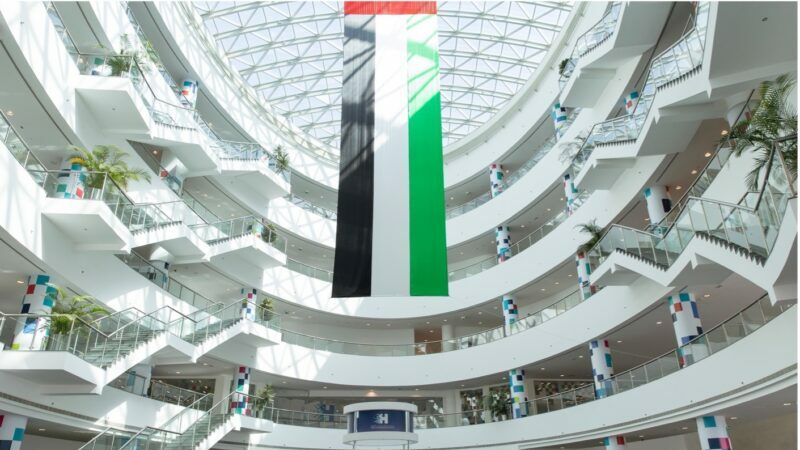Recently approved EU recovery plans call for a digital transition to increase the economic and societal resilience of its member states – connected lighting, Signify argues, is the way forward.
The Recovery and Resilience Facility, voted in by the European Parliament last Wednesday, is a key financial instrument to assist post-pandemic reforms and is largely structured around welcoming green and digital investments, in alignment with 2050 climate-neutrality targets.
“This Facility provides EU countries with a unique chance to rebuild and revamp their economies for the post-Covid world,” said Valdis Dombrovskis, Executive Vice-President for an Economy that Works for People, adding that the €672.5 billion stimulus package “is an opportunity to build resilience and embrace a more digital and greener future.”
Lighting company Signify supports the Union’s funding and green transition, becoming a carbon neutral company itself in September, and advocates for the use of connected lighting systems to digitalise societies.
“Instrumental to our achieving carbon neutrality was equipping our buildings with our own energy efficient connected lighting,” said Harry Verhaar, Global Head of Public and Government Affairs at Signify. “It really can help governments and enterprises to fulfil the twin recovery objectives of a carbon neutral and a digital Europe.”
In 2018, the company installed a state-of-the-art connected lighting system at Hamdan Bin Mohammed Smart University (HBMSU) in Dubai – a learning environment with no light switches.
Controlled by Signify’s Interact Office platform, luminaires are equipped with motion sensors that can monitor human presence. The sensors are linked to an integrated Building Management System, including the heating, ventilation and air conditioning and, together, these adapt to footfall and room usage, resulting in a 15% reduction in the university’s total energy bill.
The installation also provides teachers and students with indoor navigation as the light points transmit geopositioning codes to user’s university smartphone apps, guiding them to their destination.
“Our first collaboration with HBMSU demonstrates the many ways our connected lighting and software applications can support Dubai’s most forward-thinking university, improving the daily life for staff, students and visitors,” said Goktug Gur, President and CEO of Philips Lighting Middle East and Turkey.
“We are not just providing good quality, energy efficient lighting but data-based insights that help the university’s site management,” he added.
Similar success has been seen in a joint effort between Signify, telecoms giant Cisco, and IT infrastructure company Atea, with the three companies implementing Interact Office at Atea’s new facility in Stavanger, Norway.
All the building’s main systems run on a single converged IP network and the 700 luminaires collect data on building occupancy and space management, as well as environmental factors like temperature, humidity, and CO2 levels.
“You will always need light, so why not utilise the ceiling and put in sensors connected to the same infrastructure?” asked Senior Network Engineer and System Architect, Pål Bjelland, adding that “by using this kind of technology, we get better utilisation of all the areas and facilities in the building, we work more efficiently and get more satisfied employees.
And the Interact system doesn’t end in the office. The company has technologies for sectors including hospitality, retail, sports, and industry, and Interact City, a software for managing smart street lighting, is high on Signify’s agenda.
For the latter, data is sent to city planners which can help to inform policies that improve energy efficiency initiatives and general liveability. Built-in scene management software can detect urban problems like traffic and parking issues as well as send alerts to the emergency services upon hearing the sound of a car crash or a gunshot.
“The Green Deal really is Europe’s ‘Man on the Moon’ moment and the added impetus provided by recovery and resilience plans, we hope, will propel Europe to be the first carbon neutral continent by 2050,” says Verhaar. “But behind every successful Moon shot is great technology. The good news is the energy efficient digital technology exists. It is tried, tested and proven, so let’s grasp this opportunity for a recovery that sets the agenda for the Europe we want to see.”
This post was sponsored by Signify. See our editorial guidelines for what this means.
